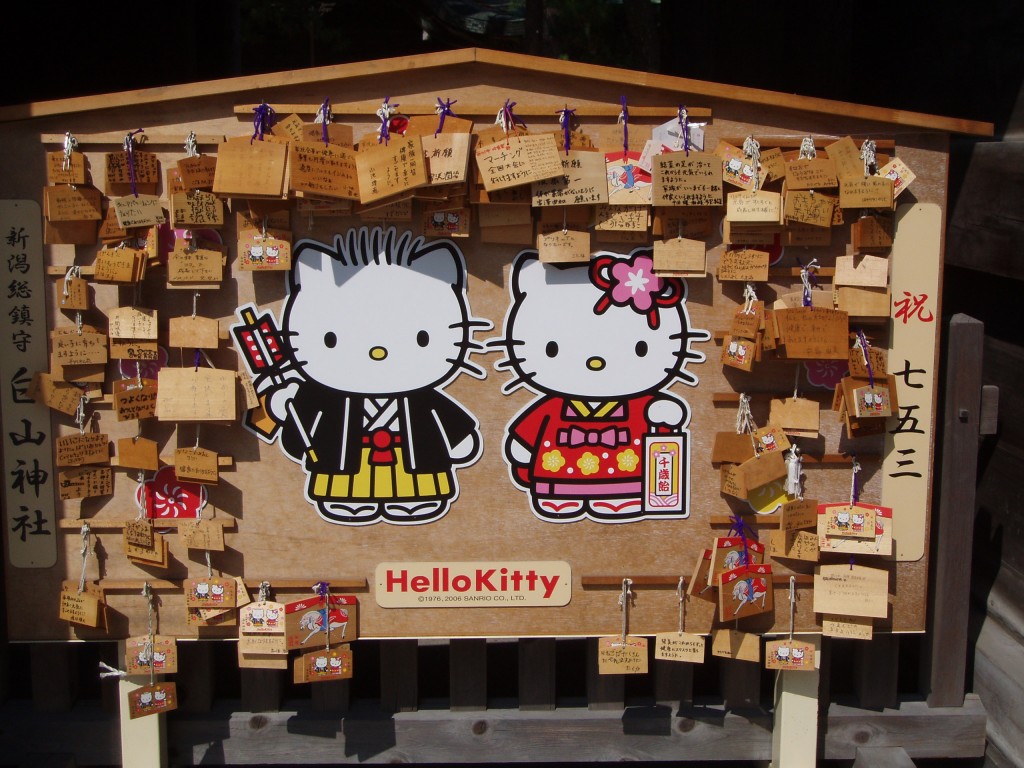
The cult of cuteness epitomised in ema
Britain’s Independent newspaper carries an article today about the fashion for ‘kawaii’ which has arrived from Japan (click here.)
I’ve written before of how the phenomenon of ‘kawaii’ might link to notions in Shinto (click here). There are two comments on the Independent article (see below) which pretty much sum up why ‘kawaii’ is unlikely to prosper in my opinion in the unreceptive climate of British culture.
gs: “ Yeucchhhh, cute is for children, children are cute, pets can be cute, the rest of us just get old and fat eventually or old and skinny.”
Jacksmilingblack: “ Japanese girls, when are they going to grow up and become women? ”
********************************************Will Coldwell writing in The Independent 26 MAY 2013
Familiars of the kami can often take cute forms
Cats in leather jackets, polka-dot pinafores and pastel-coloured cartoons only begin to explain the aesthetic of Japan’s culture of kawaii. Roughly translating as “cute”, kawaii describes the adorable physical features of things like babies, small animals, and indeed anything that evokes feelings of love, nurture and protection.
But what was once simply an adjective is now an all-encompassing ideal, rearing its lovable wide-eyed head in all aspects of Japanese life. Increasingly, girls not only want to own things that are kawaii, they want to be kawaii too, adorning elaborate eye-catching clothing and intricately detailed accessories to transform themselves into the cutest kawaii characters they could possibly be. And you don’t have to travel to Tokyo to get a hint of this unique fashion; kigurumi animal onesies, cat cafés, and Hello Kitty are all examples of the steadily growing influence kawaii has in the West.
“In the UK and the States it appeals to the people who like the exoticism of it – it’s a new fresh culture,” says Manami Okazaki, author of Kawaii! Japan’s Culture of Cute, a book published this month that takes a holistic look at the trend. “It’s cute, innocent and different to the mainstream pop cultures in the West,” Okazaki says. “It might be appealing to those who don’t feel an affinity to the more sexy and glamorous mainstream styles. A Japanese girl would prefer to be called kawaii than sexy or pretty.”
For Grace St John, a 21-year-old drama student and kawaii convert from Birmingham, this is one of the key appeals. “A lot of UK fashion is low-cut tops or short skirts, designed to look sexy, but kawaii fashion tends to focus more on a fantasy and cute style,” she says. “I like to wear puffy dresses, wigs and lots of bows in my hair to bring in all the cute colours! It’s fun and makes me feel really good about myself, the fashion has an ability to make you feel excited to go out and get dressed up – I don’t think I’d feel particularly excited to put on a pair of jeans.”
A Tenjin ox with Winnie the Pooh bib
She is already looking forward to this July’s Hyper Japan expo in Earls Court – a showcase of all aspects of Japanese pop culture. One of the main attractions is the kawaii fashion catwalk, which gives a chance for British fans to parade their take on Tokyo street style.
In the UK, kawaii fashion and accessories are often popular with the comic-book and gaming community. At the MCM Comic Con event, which took place at the weekend, there was an entire section dedicated to Japanese and Asian culture. Along with manga and anime, kawaii products are a popular purchase.
One stallholder at Comic Con was Thomas Andersson, owner of Artbox, the UK’s leading retailer of kawaii products, which has shops across London. He started distributing kawaii bags in 2004 and now stocks a range of more than 2,500 products from around 70 different brands. He sells everything from 50p stickers to a metre-high, £200 stuffed version of the popular character Rilakkuma the bear.
“We actually sell quite a few,” Andersson says. “I think that kawaii will continue to spread; we have customers such as Claudia Schiffer, Dave Grohl and even Jude Law sometimes comes into the shop, well, with his kids.”
But while interest in kawaii is growing around the world – it is particularly popular in France and Mexico – it is unlikely to infiltrate daily life in Britain the same way it has in Japan. As Okazaki explains: “In Japan it’s not a subculture thing, it’s the norm.”
St John, however, lives in hope: “I think there are a lot of people who will never understand or accept the fashion, as you do get people shouting at you in the street, but I hope that with the growing community and exposure of kawaii people will be more accepting about getting a little kawaii fashion in their lives!”
Shichi-go-san is an occasion when the Japanese proclivity for cuteness is allowed full rein
One of those cute 'characters' manages to get on stage at a Shimogamo shrine event

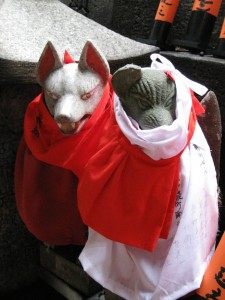
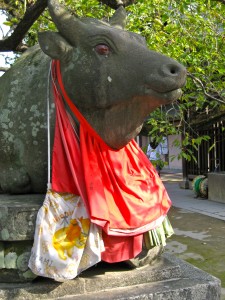
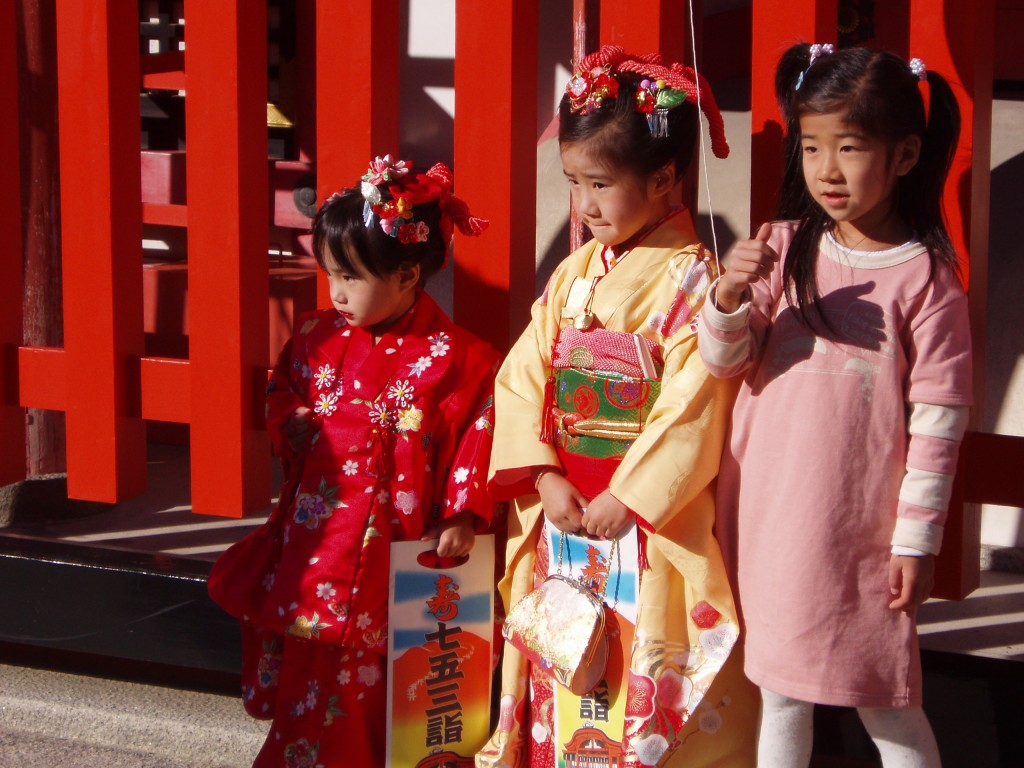
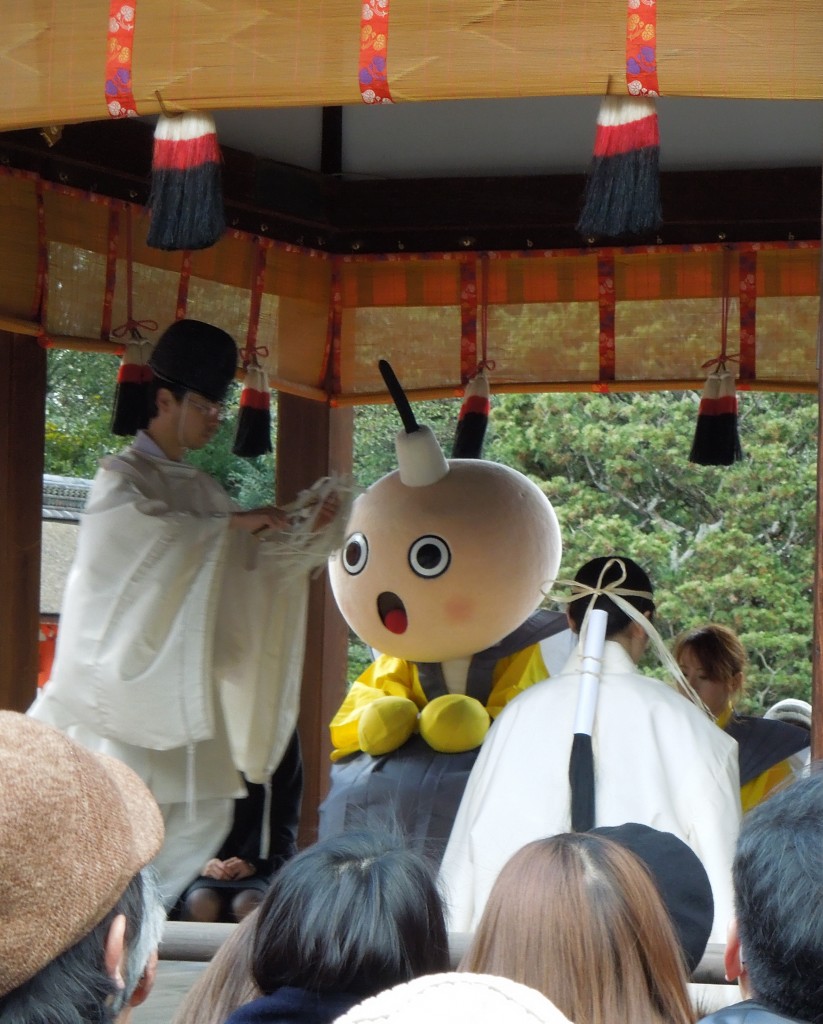
Leave a Reply